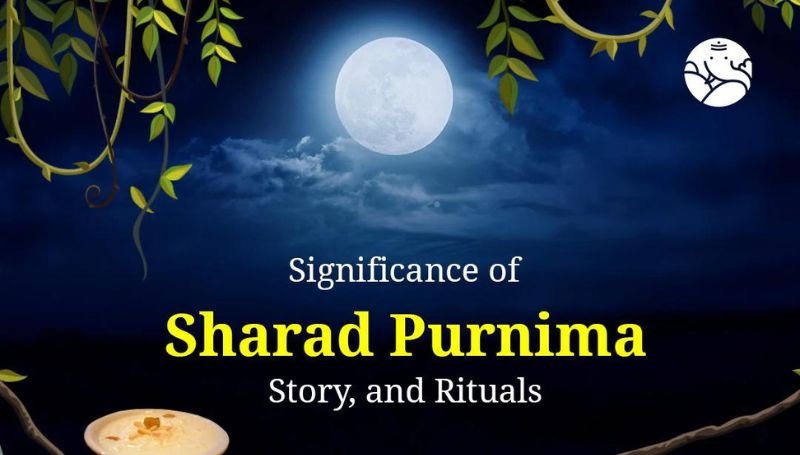
Sharad Purnima, a revered occasion known by many names such as Kumara Purnima, Kojagari Purnima, Navanna Purnima, Kojagrat Purnima, or Kaumudi Purnima, stands as a profound Hindu festival observed during the resplendent full moon of the Ashwin month (September-October). It symbolizes one of India’s most paramount harvest festivities, marking the culmination of the monsoon’s reign and the inception of the autumnal embrace.
Sharad Purnima’s exultation varies across the diverse geographical tapestry of India. In certain regions, it metamorphoses into a vibrant homage to the venerated goddess Lakshmi, the epitome of wealth and prosperity. Meanwhile, in other realms, it transforms into a fervent celebration of Lord Krishna and his transcendental dance with the gopis.
Significance
Sharad Purnima transcends mere merriment; it is a festival of multifaceted significance for Hindus. Firstly, it heralds the conclusion of the monsoon and heralds the advent of autumn, a time synonymous with abundance and affluence, thanks to the bountiful harvest and temperate climate.
Secondly, the festival’s eminence is further underscored by its association with the goddess Lakshmi. The belief dictates that on this sanctified day, Lakshmi descends upon the earthly realm to bestow her divine blessings upon her devoted adherents. Thus, fervent worshippers beseech Lakshmi’s grace, seeking financial opulence, prosperity, and a favorably ordained fortune.
Thirdly, Sharad Purnima intertwines itself with the narrative of Lord Krishna. On this sacred day, it is purported that Lord Krishna performed the celestial ‘raas leela’ with the ethereal gopis, symbolizing an exalted manifestation of love, devotion, and divine rapture.
Celebrations
The celebration of Sharad Purnima is a convivial and spirited affair that unites hearts and minds across the tapestry of India. Homes are meticulously cleansed and adorned with fragrant blooms and illuminating lights. Elaborate culinary delights, exemplified by the delectable ‘kheer,’ are meticulously prepared and offered as divine tributes to the pantheon of gods and goddesses.
In certain locales, the devout observe a ritualistic fast throughout Sharad Purnima. Their fasting culminates at night, following ardent invocations to the divine entities.
A cherished custom associated with Sharad Purnima involves the preparation of ‘kheer’ under the caressing moonlight. The belief holds that the moon’s luminescence on this night possesses restorative and revitalizing attributes.
Furthermore, a popular tradition is to remain vigil during the nocturnal hours of Sharad Purnima. It is a time when the deities are thought to be watchful, attentive to the earnest supplications of their ardent devotees.
Cultural Significance
Sharad Purnima transcends being merely a festival; it evolves into a profound cultural celebration in the intricate tapestry of India. It serves as a magnetic force that draws families and communities together to revel in the opulence of the harvest season. It also assumes the role of a sacred conduit for the reverence of deities, a time when blessings are fervently implored to grace the forthcoming year.
Sharad Purnima, with its resplendent aura, stands as a splendid and auspicious festival that resonates with joy and exuberance across the vibrant mosaic of India. It is an occasion to revel in the bountiful harvest, to pay homage to the gods and goddesses, and to entreat their benevolence for the year ahead.



